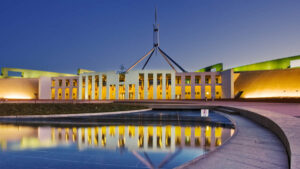Australian LNG shipments are down, are lean times ahead for gas producers?

Pic: Vertigo3d / E+ via Getty Images
Australian gas producers may have to tighten their belts for the next couple of years due to the continued impact on the global economy and energy demand from the COVID-19 pandemic.
In its latest monthly report, Australian energy advisory firm EnergyQuest noted local liquefied natural gas (LNG) shipments are starting to be impacted by the global oversupply of LNG brought on by the fall in energy demand.
In May, Australia shipped 93 cargoes totalling 6.4 million tonnes of LNG, down seven cargoes from April, due to lower cargoes from the APLNG and Ichthys projects.
EnergyQuest also estimated that 41 Australian shipments were anchored offshore or were streaming slowly awaiting final destination orders during May and early June.
While Chinese demand continued to be robust, rising 12.2 per cent in April, LNG imports by Japan and South Korea, Australia’s two other major customers, were down 7.7 per cent and 7.2 per cent respectively in the same month.
This is due to gas prices remaining at record low prices in both Europe and Asia despite higher temperatures and air conditioning demand during early June.
Concerns have been raised that European gas storage could hit capacity, which could in turn lead to negative prices, and that this could have ripple effects for buyers and sellers from the US to Asia.
For domestic gas consumers, the fall in exports is likely to make more gas available for domestic use.
East coast short-term gas prices in May were generally lower than in April and remain at their lowest level since 2016.
Queensland gas prices averaged $4.04 per gigajoule (GJ) at Wallumbilla, down from $4.38/GJ in April while prices in Brisbane fell from $4.44/GJ in April to $3.94/GJ.
Prices in Sydney were down from $4.54/GJ to $4.21/GJ but increased in to $4.83/GJ from $4.48/GJ in Victoria and from $5.01/GJ to $5.10/GJ in Adelaide.
In the short-term at least, the ongoing economic uncertainty and lower energy demand could send gas prices down further, which could impact on gas coast producers.
However, in the medium term (to 2030), EnergyQuest believes that supply constraints will become increasingly evident due to the decline of Victorian offshore production and the absence of any major new gas discoveries.
Longer-term gas demand is expected to grow as the closure of coal-fired power generation accelerates and demand for gas to back up renewables increases.
On the west coast, the decline in the North West Shelf and delays in developing the Browse and Scarborough fields presents an opportunity for Perth Basin operators.
ASX small cap gas companies
Senex Energy (ASX:SXY) well positioned to capitalise on the longer-term demand for gas with the company recently completing its wholly-owned Surat Basin natural gas development project.
The project consists of 80 gas wells along with infrastructure capable of processing more than 20 petajoules (PJ) of gas per annum at the Roma North and Atlas projects.
With more than 600PJ in proved and probable (2P) reserves present in the company’s Surat Basin acreage, the project is expected to deliver gas into the east coast market for decades to come.
Highlighting the lower demand for LNG, Senex reported in May that it was reducing gas supply to GLNG by about 1PJ over the period from June to August at GLNG’s request.
These volumes will instead be redirected to the Wallumbilla natural gas supply hub and marketed to east coast domestic customers.
Last week, Armour Energy (ASX:AJQ) upgraded 2P gas reserves at its Kincora project by 22 per cent to 150.3PJ.
This follows the successful hydraulic stimulation of the Myall Creek 5A well, the drilling of the Horseshoe 4 gas well and ongoing geological and reservoir studies across the greater Kincora project.
Armour is currently progressing plans to fracture stimulate its existing well stock in 2020 and 2021 to increase gas production and further characterise the fields for future drilling and ultimately contribute to the reserve’s maturation strategy.
Blue Energy (ASX:BLU) recently initiated a pre-feasibility study into the potential for the development of gas generation capacity within its landholding.
The company is also pursuing gas buyers in Townsville and is a proponent of a pipeline from Moranbah to Gladstone to meet predicted future gas shortfalls.
Comet Ridge (ASX:COI) has secured Queensland government environmental approval for its Mahalo gas project, the second of two environmental steps required for the project to proceed to production.
The company is now waiting on the issue of petroleum leases to complete all regulatory clearances to move ahead.
Mahalo has current 2P reserves of 172PJ.
Strike Energy (ASX:STX) recently said the reprocessing of historical 2D seismic data has increased its confidence that valuable Permian-aged sequences are present in its wholly-owned permits south of EP469, which hosts its West Erregulla discovery with Warrego Energy (ASX:WGO).
The confirmation of a four-way dip closure over the greater South Erregulla structure, increased confidence in a sealing updip of the northwest arm of the structure, and connectivity to West Erregulla supports the company’s confidence in finding an equivalent trap-seal combination that is likely to host a conventional hydrocarbon reservoir.
Strike has also received final 3D seismic data over the Walyering prospect that indicates the presence of a high-confidence wet gas accumulation updip of the Walyering-4 well.
Related Topics

UNLOCK INSIGHTS
Discover the untold stories of emerging ASX stocks.
Daily news and expert analysis, it's free to subscribe.
By proceeding, you confirm you understand that we handle personal information in accordance with our Privacy Policy.








